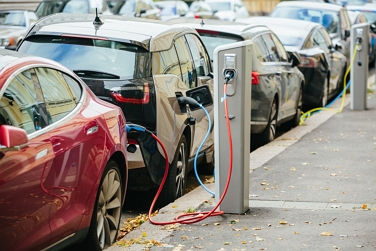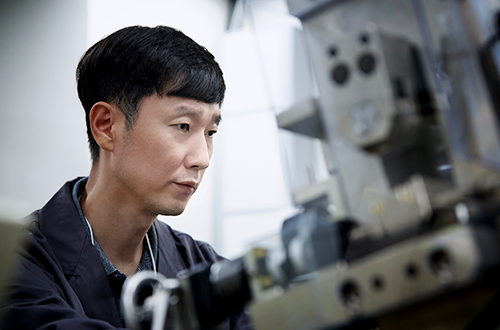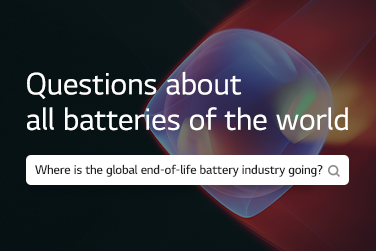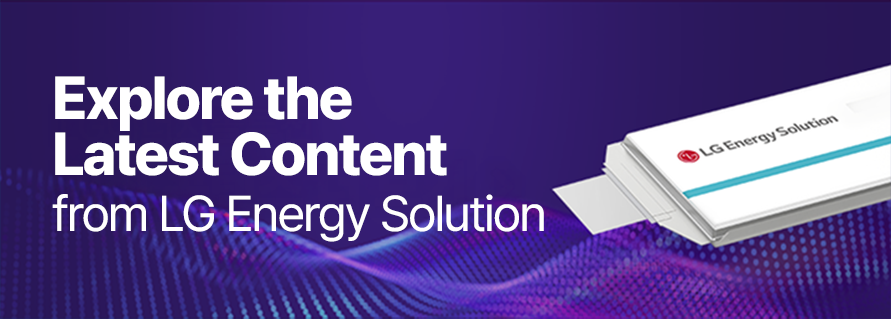
LG Energy Solution invited future talent in the STEM (Science, Technology, Engineering, and Mathematics) fields to the “LG Tech Conference 2025,” an LG Group–hosted event, to provide a platform for sharing the latest battery technologies and trends and for networking with each other. The technology-sharing and networking event, held at LG Science Park in Gangseo-gu, Seoul on April 3, brought together about 300 Master’s and PhD students in STEM. The participation of 27 science high school students – for the first time – added value to the occasion.
On that day, 27 tech leaders from LG presented technologies specific to their respective fields – electronics, display, optics, advanced materials, and smart logistics – during the “Tech Session.” LG Energy Solution’s presentation themes involved secondary battery-related AI technologies, materials, and next-generation batteries. These sessions were highlighted by the speakers’ firsthand experience at the forefront of the battery industry as well as success stories of applying cutting-edge technologies in real-world settings. Among them, we will begin with the “Use Cases of GenAI Implementation” delivered by Jin-woo Jang of the GenAI Solution Team.
GenAI, Deeply Embedded in Our Daily Lives
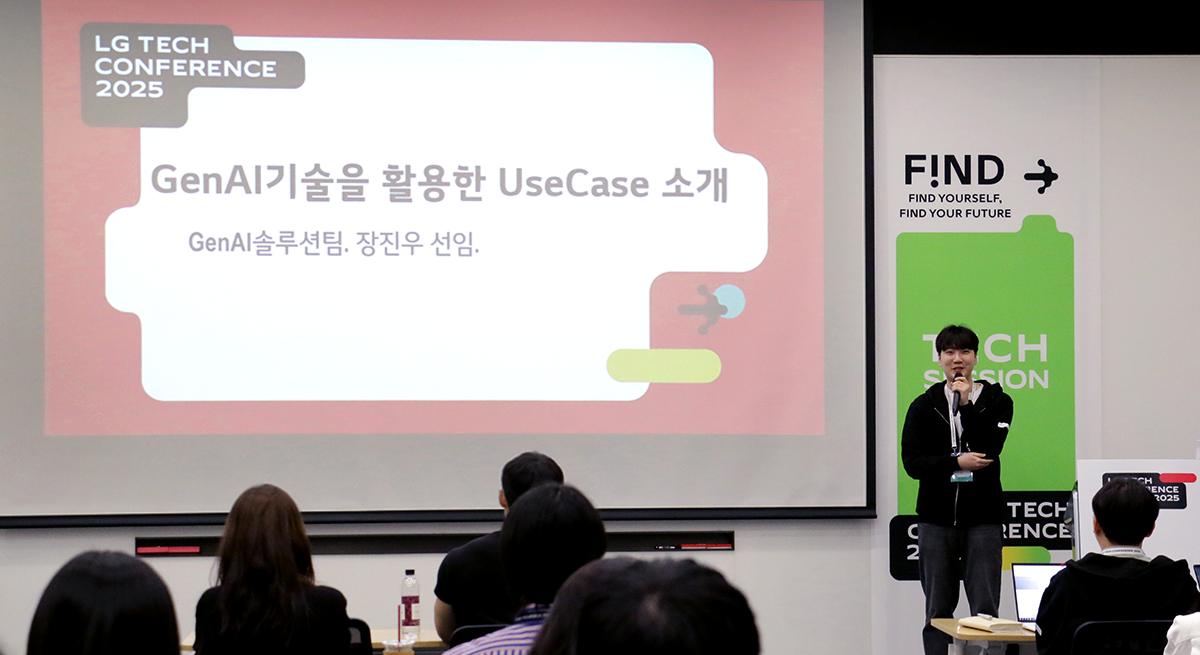
Since the launch of ChatGPT in 2022, generative AI has rapidly become an essential part of daily life. It is now increasingly covering a wide range of areas, from simple communications such as translation, email writing, and chatbots to more advanced work such as R&D and technical and visual design. It has also grown from offering text-based outputs to producing various forms of media, including sound, images, and videos.
The recent global craze of converting photos into Japanese animation-style images using ChatGPT is reinforcing the perception of GenAI as a friendly AI that everyone can use. Indeed, GenAI has become so common that its applications can now be found almost everywhere.
Foreseeing the rapid growth of AI, LG Group established LG AI Research, its AI think tank, in December 2020, and introduced EXAONE 1.0, a Large Language Model1, 2 in December 2021, opening a new chapter in Korea’s AI technology.
The initial model evolved later into EXAONE 3.5, which focuses on diverse research areas and practical applications, and EXAONE Deep, which is dedicated to solving logical problems such as coding, through continued research and development. Both models are now widely used across the LG Group.
Convergence of Battery Technology and GenAI
How is GenAI being applied in the battery industry?
LG Energy Solution is improving work productivity through diverse GenAI models. These tools bring convenience not only to email writing, but also to drafting reports on the latest trends, and summarizing research papers. In this session, we will explore how GenAI is being used for △battery design, △ knowledge management, and △ patents.
PART 1. Battery Design: Conventional Approach
LG Energy Solution supplies secondary batteries to global clients for a variety of applications, including electric vehicles, energy storage systems (ESS) and other electronic devices. Its portfolio includes products customized to its clients as well as standardized models such as 18650 and 2170 cylindrical batteries. Since performance specifications, materials, and pricing vary depending on the end product and customer, accurately identifying demand is important. These varying demands are called RFx2.

How is LG Energy Solution responding to customer requirements in an RFx?
When it receives an RFx, LG Energy Solution first assesses feasibility through simulations based on the customer’s requirements. Instead of creating a prototype, the battery maker simulates expected performance using electrochemical equations to shorten development time. Then it analyzes multiple factors including energy density, capacity, and output, based on the simulation results, and proposes the most suitable option that reflects the customer’s requirements.
PART 2. Battery Design: Introduction of the GenAI Diffusion Model
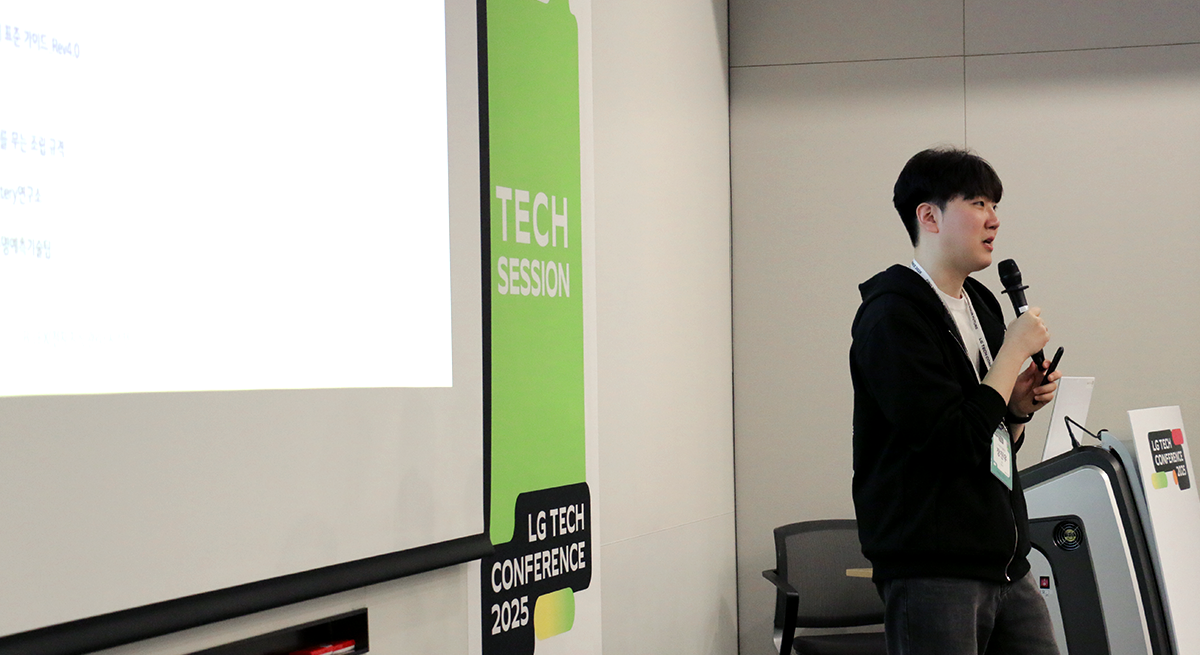
LG Energy Solution adopted a new method to offer faster and more accurate prediction results to its customers, which is to use GenAI to increase the RFx simulation speed.
Among many models, the company adopted the diffusion model. While it describes the process by which substances spread in thermodynamics, in generative AI, this concept is one of the methods computers use to create new images. An AI using this model repeatedly adds noise to a clear image and then removes it. As it does so, it learns how images change and understands the details of complex images, ultimately producing high-quality images. To sum up, the AI learns how images transform and restores them, resulting in refined images.
In battery design, the conventional model tested different design parameters in turn during simulation to meet the requirements in the RFx. In contrast, GenAI produces candidate design parameters guided by the performance parameters specified in the RFx.
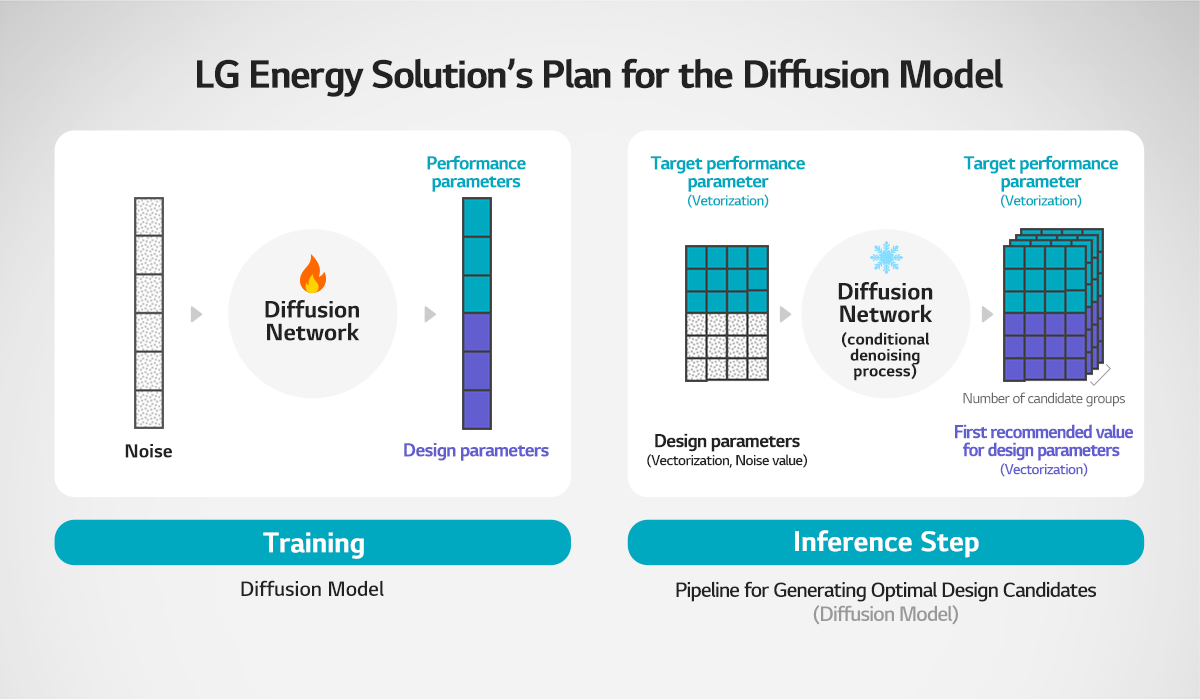
LG Energy Solution’s diffusion model first learns performance and design parameters, then understands the correlations between the two through iterative training on diverse data and noise (such as uncertainty, variations, and errors). When the learning is complete and performance targets are input, the model removes noise and generates candidates for the optimum design parameters. This process shortens what was previously a two-week process to less than 24 hours. The company is conducting various optimization tests to facilitate the rapid adoption of the diffusion model in real-world simulations.
PART 2. Knowledge Management: Use of the Battery Knowledge System “B-LEX”
Having developed Korea’s first secondary battery and secured proprietary technologies, LG Energy Solution possesses a vast amount of secondary battery-related data. The company decided to better leverage the long-accumulated, high-quality data and launched Battery-LG Energy solution EXplorer (B-LEX), an internal battery knowledge system, in December 2018. As it offers a platform to search for technical expertise, terminology, and information on the company’s global projects, B-LEX has become a widely adopted tool among employees.
PART 2. Knowledge Management: A Battery Knowledge AI Chatbot Improved with RAG and Fine-tuning
With its strong technological competitiveness, LG Energy Solution produces vast volumes of data, fueling the accumulation of information in B-LEX. Consequently, search performance has become increasingly important for quick and accurate searches.
Like other search engines, B-LEX also returns multiple documents when a specific keyword is entered. Previously, users had to check each one manually to find the right information they needed. This job was time-consuming and revealed the need for a more efficient method.
To address this issue, the company unveiled an AI chatbot specialized in battery knowledge in February 2025. The model was trained using Retrieval-Augmented Generation (RAG) and Fine-tuning, two key technologies to enhance accuracy and usefulness.
When a user enters a question in RAG, the search engine Smart Retriever locates relevant documents on the knowledge platform. Then, RAG delivers the retrieved documents along with the question to the large language model (LLM). The LLM compares and analyzes the documents and the question, producing the most suitable results. Meanwhile, Fine-tuning maximizes performance by adapting it to the content of the knowledge platform and enabling it to answer questions without the need to retrieve documents.
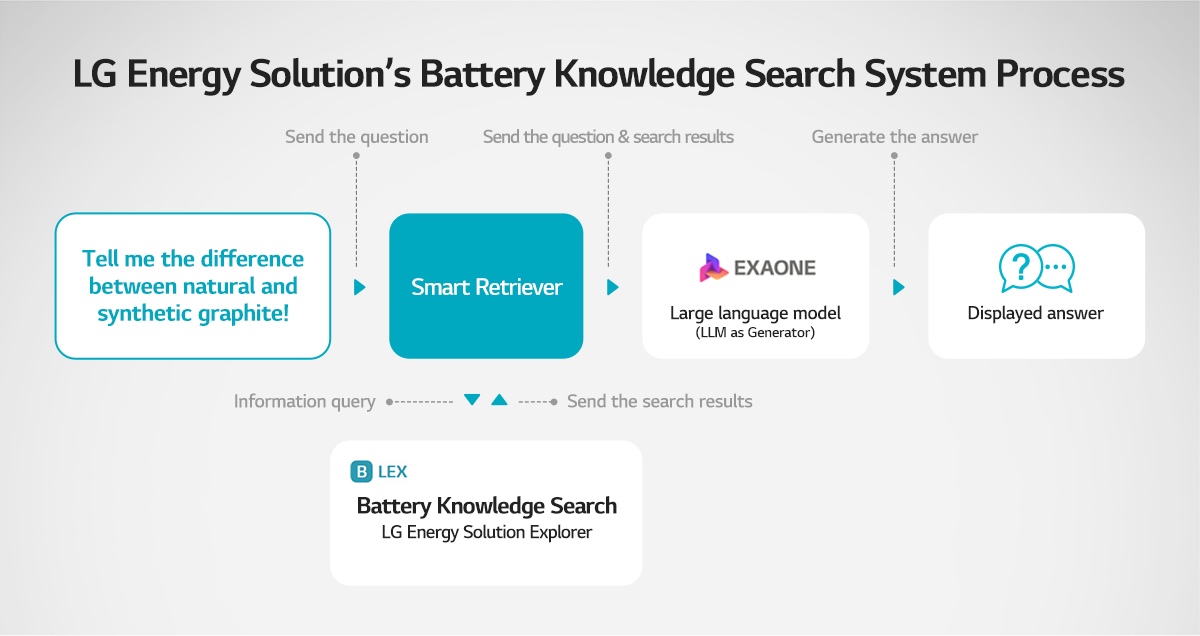
For instance, when a user asks about the difference between natural and synthetic graphite, Smart Retriever in the RAG searches for relevant documents in B-LEX. Next, EXAONE, an LLM, analyzes and interprets the retrieved data and the question, and RAG provides the answer based on that.
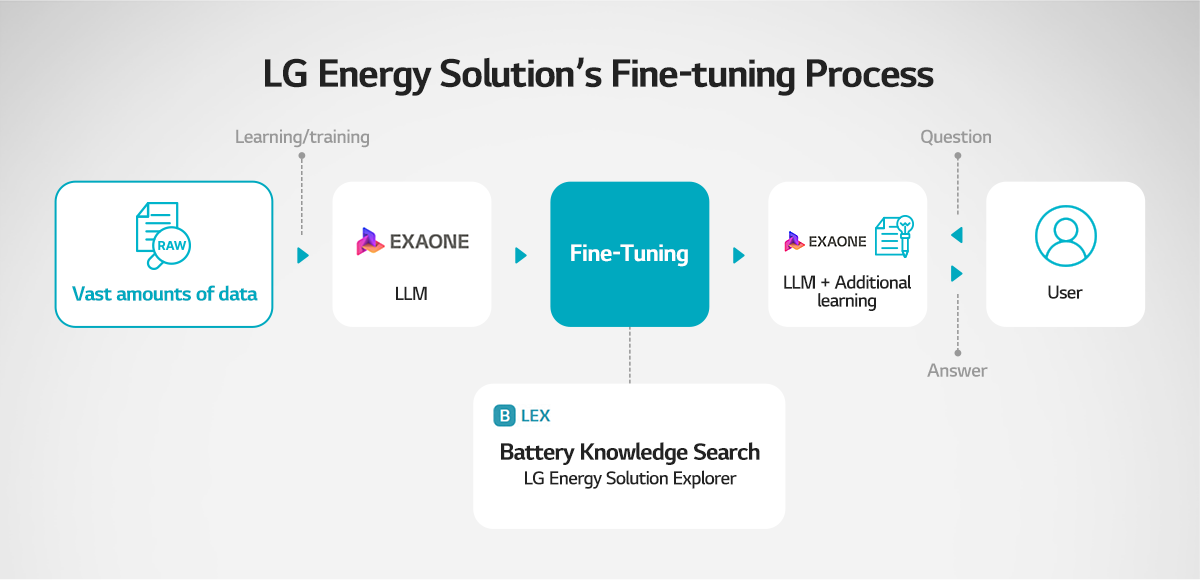
In comparison, when it receives a question, Fine-tuning provides answers by harnessing the knowledge it has learned from B-LEX. As it is trained exclusively on the given battery-related data, the system can deliver accurate responses without retrieving documents.
Currently, about 700-800 employees use the AI chatbot during working hours at LG Energy Solution. They have expressed satisfaction with its high accuracy and quick response when searching for necessary information.
PART 3. Patent: Importance of Patent Application
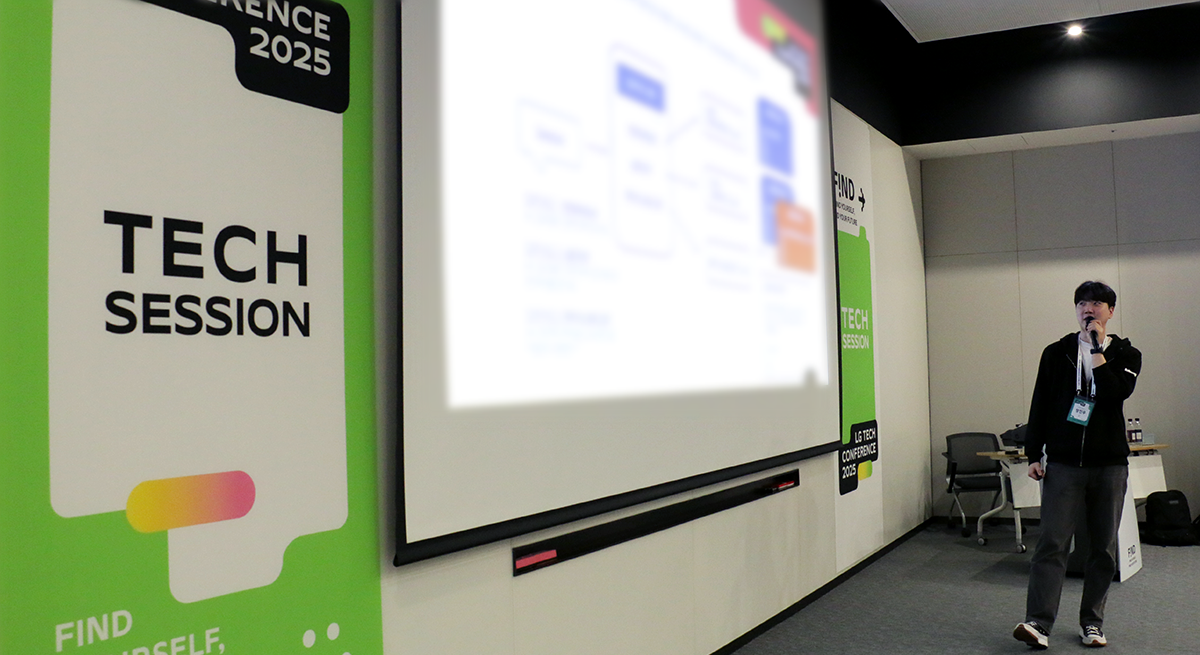
With technology emerging as a key driver of corporate and national competitiveness, the importance of protecting intellectual property is increasing more than ever. In industries with high entry barriers, such as secondary batteries, it has become a critical challenge to secure technologies developed ahead of others. LG Energy Solution recognized this need early on and has proactively protected its proprietary technologies by filing patent applications.
LG Energy Solution currently holds around 72,000 patents – the largest portfolio in the industry. An essential part in the patent application process is conducting a thorough research on prior art, because a patent cannot be granted if similar technology already exists. However, searching through extensive patent-related data requires much time and effort.
PART 3. Patent: Developing Patent Search Scenarios Using GenAI
Holding the largest patent portfolio in the global battery industry, LG Energy Solution has built various patent search scenarios into its battery knowledge AI chatbot. Patent information is vast and complex, containing detailed technical information, and therefore requires more elaborate and precise searches than other search systems.
Accordingly, the GenAI adopted in the system was further refined, enabling it to classify questions into appropriate scenarios for response. This classification was supported by EXAONE 7.8B, an LLM designed by LG AI Research for research and development purposes.
For instance, when a user asks the chatbot to “find patents related to fast charging,” the LLM first identifies the user’s intent and searches across all patent data to suggest the most relevant answers. In doing so, the system classifies the query as a request for general information, a patent search, or an in-depth search on the details of a specific patent. The system is capable of appropriately responding to all these scenarios.
The patent AI chatbot provides not only internal patent searches but also patent summaries, and is planned to expand its scope to include searches across all publicly available patent data.

As previously introduced, LG Energy Solution is building a new paradigm as a frontrunner in the global battery industry, setting an example in using GenAI in the manufacturing industry. We will continue to enhance customer value by expanding AI technology applications.
